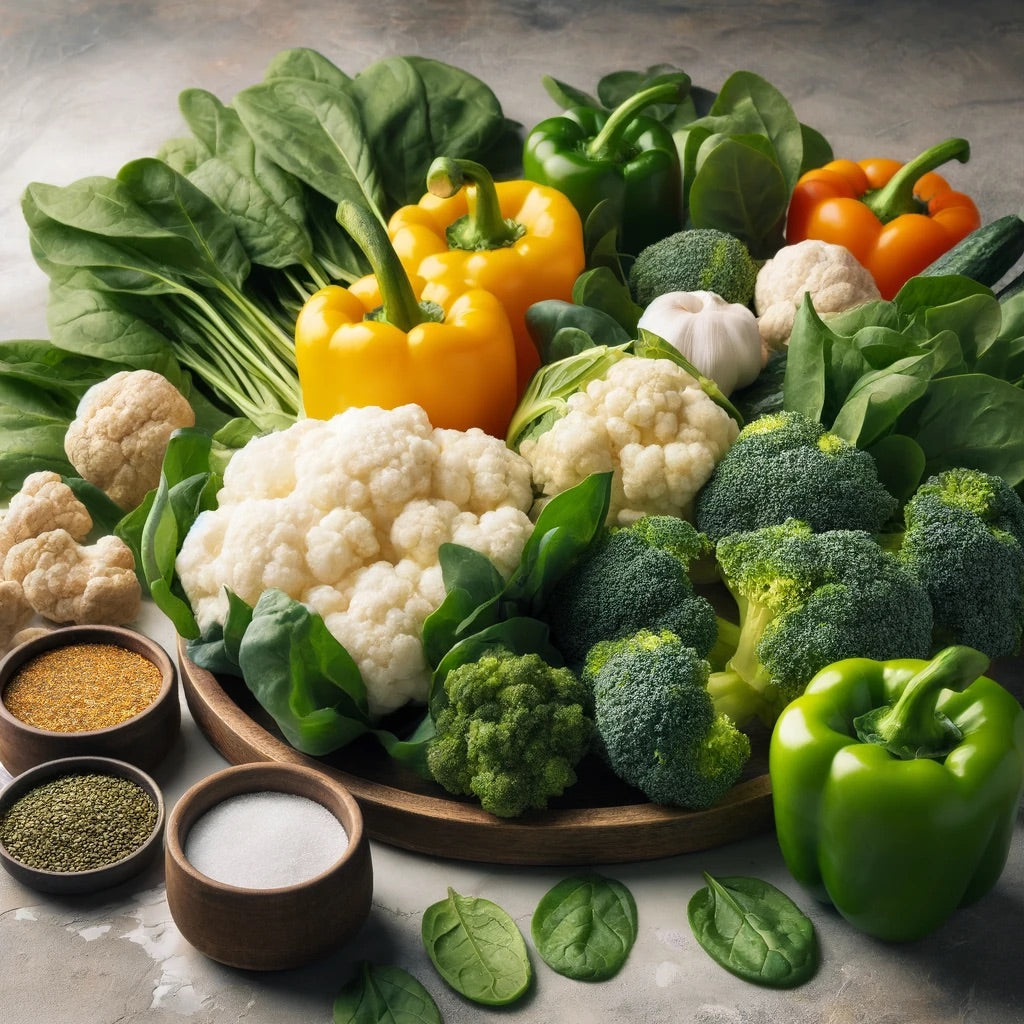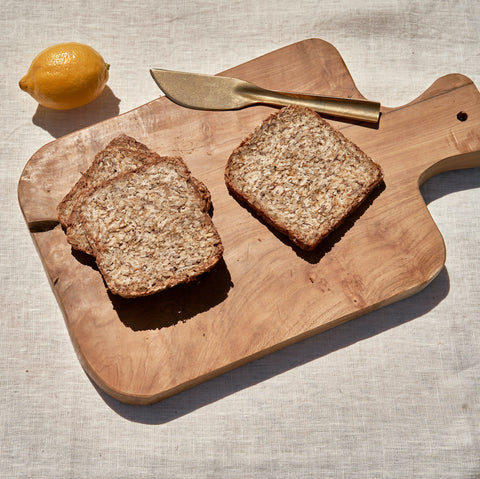
Ultimate Guide to Low-GI Foods for Stable Blood Sugar Levels
Share
Maintaining stable blood sugar levels is essential for overall health, especially for individuals managing diabetes, insulin resistance, or those aiming to optimize their metabolic health. One effective strategy is to focus on low-glycemic index (GI) foods. This follow-up article will explore the benefits of low-GI foods, how they impact blood sugar and insulin levels, and provide a comprehensive list of approved low-GI foods to include in your diet. Additionally, we will discuss practical tips for incorporating these foods into your daily meals.

Understanding the Glycemic Index
The glycemic index is a ranking system that classifies carbohydrates based on how quickly they raise blood glucose levels after consumption. Foods are scored on a scale from 0 to 100, with higher values indicating a rapid increase in blood sugar levels. Low-GI foods have a score of 55 or less, medium-GI foods range from 56 to 69, and high-GI foods score 70 or above.
Why Choose Low-GI Foods?
Low-GI foods cause a slower, more gradual rise in blood glucose levels, which leads to several health benefits:
- Improved Blood Sugar Control: Low-GI foods help prevent rapid spikes and crashes in blood sugar levels, making them beneficial for individuals with diabetes or insulin resistance.
- Enhanced Satiety: These foods tend to keep you feeling fuller for longer, which can aid in weight management.
- Reduced Risk of Chronic Diseases: A diet rich in low-GI foods has been associated with a lower risk of developing type 2 diabetes, cardiovascular disease, and certain cancers.
- Better Energy Levels: By providing a steady release of energy, low-GI foods can help maintain consistent energy levels throughout the day.
How Low-GI Foods Impact Blood Sugar and Insulin Levels
When you consume high-GI foods, they are quickly broken down into glucose and absorbed into the bloodstream. This rapid increase in blood sugar triggers a significant release of insulin, the hormone responsible for lowering blood glucose levels. Over time, frequent consumption of high-GI foods can lead to insulin resistance, where the body's cells become less responsive to insulin, increasing the risk of type 2 diabetes and other metabolic disorders.
In contrast, low-GI foods are digested and absorbed more slowly, resulting in a gradual release of glucose into the bloodstream. This slower process helps maintain stable blood sugar levels and reduces the demand on the pancreas to produce large amounts of insulin. By incorporating more low-GI foods into your diet, you can support better blood sugar control and overall metabolic health.
Comprehensive List of Approved Low-GI Foods

1. Vegetables
Non-starchy vegetables are excellent low-GI options, packed with vitamins, minerals, and fiber. Examples include:
- Spinach
- Broccoli
- Cauliflower
- Brussels sprouts
- Kale
- Zucchini
- Bell peppers
- Asparagus
- Green beans
- Carrots (in moderation)
2. Fruits
While some fruits have a higher GI due to their natural sugar content, many are still considered low-GI. Examples include:
- Berries (strawberries, blueberries, raspberries, blackberries)
- Apples
- Pears
- Oranges
- Grapefruit
- Cherries
- Peaches
- Plums
- Kiwi
3. Whole Grains
Whole grains are a great source of fiber and other essential nutrients. Low-GI whole grains include:
- Quinoa
- Barley
- Bulgur
- Steel-cut oats
- Whole wheat pasta
- Brown rice (in moderation)
4. Legumes
Legumes are rich in protein, fiber, and other nutrients, making them an excellent low-GI food choice. Examples include:
- Lentils
- Chickpeas
- Black beans
- Kidney beans
- Pinto beans
- Navy beans
5. Nuts and Seeds
Nuts and seeds are packed with healthy fats, protein, and fiber. They have minimal impact on blood sugar levels. Examples include:
- Almonds
- Walnuts
- Chia seeds
- Flaxseeds
- Pumpkin seeds
- Sunflower seeds
Our Pharmer Bread has a ton of these ingredients!

Order Here
6. Dairy and Dairy Alternatives
Some dairy products and alternatives have a low GI. Opt for unsweetened versions to avoid added sugars. Examples include:
- Greek yogurt
- Skim milk
- Almond milk
- Soy milk
- Coconut milk
7. Protein Sources
Lean proteins have little to no impact on blood glucose levels and are essential for muscle maintenance and overall health. Examples include:
- Chicken breast
- Turkey
- Lean beef
- Fish (salmon, mackerel, sardines)
- Tofu
- Tempeh
- Eggs
Need high protein ready to eat food?

Order Here
Practical Tips for Incorporating Low-GI Foods
1. Plan Balanced Meals
Aim to include a variety of low-GI foods in each meal. For example, combine a lean protein source with non-starchy vegetables and a whole grain. This combination provides a balanced intake of macronutrients and supports stable blood sugar levels.
2. Use Healthy Cooking Methods
Cooking methods can impact the glycemic index of foods. Choose healthier cooking methods such as steaming, grilling, baking, or sautéing instead of frying. These methods help retain the nutritional value of foods without adding unnecessary fats or sugars.
3. Monitor Portion Sizes
While low-GI foods are beneficial for blood sugar control, it’s essential to watch portion sizes to avoid overeating. Even healthy foods can contribute to weight gain and elevated blood sugar levels if consumed in excessive amounts.
4. Pair High-GI Foods with Low-GI Foods
If you occasionally consume high-GI foods, pair them with low-GI foods to help balance the overall glycemic impact of your meal. For example, if you have white rice, pair it with a serving of beans and vegetables to slow down the absorption of glucose.
5. Snack Smartly
Choose low-GI snacks to keep your energy levels stable between meals. Some great options include a handful of nuts, a piece of fruit, or raw vegetables with hummus.
6. Stay Hydrated
Proper hydration is essential for overall health and can help with blood sugar management. Drink plenty of water throughout the day and avoid sugary beverages that can cause blood sugar spikes.
Sample Low-GI Meal Plan
Breakfast: Greek Yogurt Parfait
- 1 cup Greek yogurt
- 1/2 cup mixed berries
- 1 tablespoon chia seeds
- 1 tablespoon chopped nuts (almonds or walnuts)

Lunch: Quinoa Salad with Avocado and Black Beans
- 1 cup cooked quinoa
- 1/2 avocado, diced
- 1/2 cup black beans
- 1/2 cup cherry tomatoes, halved
- 1/4 cup red onion, finely chopped
- 1/4 cup fresh cilantro, chopped
- Dressing: 2 tablespoons olive oil, juice of 1 lime, salt, and pepper to taste
Snack: Apple Slices with Almond Butter
- 1 medium apple, sliced
- 2 tablespoons almond butter
Dinner: Grilled Chicken with Roasted Vegetables
- 4 oz grilled chicken breast
- 1 cup roasted Brussels sprouts
- 1 cup roasted sweet potatoes (in moderation)
- 1 cup steamed broccoli
Incorporating low-glycemic index foods into your diet is a powerful strategy for managing blood sugar and insulin levels, supporting overall metabolic health, and reducing the risk of chronic diseases. By understanding the glycemic index and choosing foods that cause a slower, more gradual rise in blood glucose, you can enjoy better energy levels, enhanced satiety, and improved long-term health outcomes.
References
- Brand-Miller, J., & Buyken, A. E. (2012). The glycemic index issue. Current Opinion in Lipidology, 23(1), 62-67.
- Jenkins, D. J., Wolever, T. M., Taylor, R. H., Barker, H., Fielden, H., Baldwin, J. M., ... & Goff, D. V. (1981). Glycemic index of foods: a physiological basis for carbohydrate exchange. The American Journal of Clinical Nutrition, 34(3), 362-366.
- Thomas, D. E., Elliott, E. J., & Baur, L. (2007). Low glycaemic index or low glycaemic load diets for overweight and obesity. Cochrane Database of Systematic Reviews, (3).
- Atkinson, F. S., Foster-Powell, K., & Brand-Miller, J. C. (2008). International tables of glycemic index and glycemic load values: 2008. Diabetes Care, 31(12), 2281-2283.
- Augustin, L. S., Kendall, C. W., Jenkins, D. J., Willett, W. C., Astrup, A., Barclay, A. W., ... & Poli, A. (2015). Glycemic index, glycemic load and glycemic response: an International Scientific Consensus Summit from the International Carbohydrate Quality Consortium (ICQC). Nutrition, Metabolism and Cardiovascular Diseases, 25(9), 795-815.
